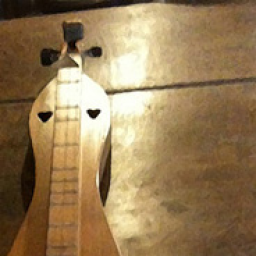How do YOU memorize music?
General mountain dulcimer or music discussions
Sandi, as others have pointed out, you are actually asking several different questions here. The answer to all of them, though, is repetition.
If you want to be able to play without staring at the fretboard, you need to play the same dulcimer--or at least one with the same VSL--all the time so that you get used to equating the difference between tones with a distance on the fretboard. I would also suggest sliding more than normal because your ear will cue you when you're approaching the right note. Although I can play my guitar without looking at the fretboard a whole bunch, I find it much harder on the dulcimer, where we jump around on the fretboard so much. HOwever, if you are really at a campfire, the fire will provide plenty of light to see the fretboard.
I have to admit that I am not sure how to tell you to "memorize" tunes. For me personally, by the time I know a song, I know the song, meaning I can play it without tablature. I can't really "play" according to tablature but only use it to learn tunes. I am sure if you went measure-by-measure or phrase-by phrase through a song you could memorize it. But I would suggest changing the way you learn songs so that you can memorize them all (until you get as old as I am and start forgetting songs you used to know).
As Ken says, you have to really "know" a piece of music in order to play it without tab. That means getting it into your head. I heard a story of Linda Brockinton driving from Arkansas to Florida listening to the same rendition of the same song over and over. She had to get the song in her head before she was able to play it on the dulcimer. Once I know what a song sounds like, I think about it's structure. Is it AABB? ABC? or whatever. Then I look for other common patterns. Maybe it is a song generally played AABB with the both parts taking 8 measures. Is each of those 8-measure sequences a single melodic line or actually two (which is often the case). Now I have a song with four distinct phrases, and usually the second part of the A and the second part of the B will be similar, sometimes even identical.
I do all that analysis (which only takes a minute or two once you have th esong in your head) before even playing. But I find it's important to understand the structure of a song so you can remember where you are when you are playing. Once I start learning the song, I will indeed take one phrase at a time or even one measure if it's really hard. And as others have said, repetition is the key. My wife and daughter hate it when I learn a new tune because I play it dozens of times every day for many days in a row. I often play nothing other than a song I am learning until I really have it down and "know" it, by which I mean I can play it with no tablature.
Of course, I sometimes forget tunes later on, but usually all that is needed is for someone to play or hum the beginning and then my memory kicks in. Ken says he writes down the tab for the beginning of each tune for the same reason, I'm sure.
I don't know if any of this is helpful, but I would suggest not playing songs that you can't hum or whistle or sing. Get it into your head first, and watch your fingers on the fetboard while you play. Then your eyes, ears, and fingers are all making connections between the differences in tone between two notes and the distances on the fretboard.





